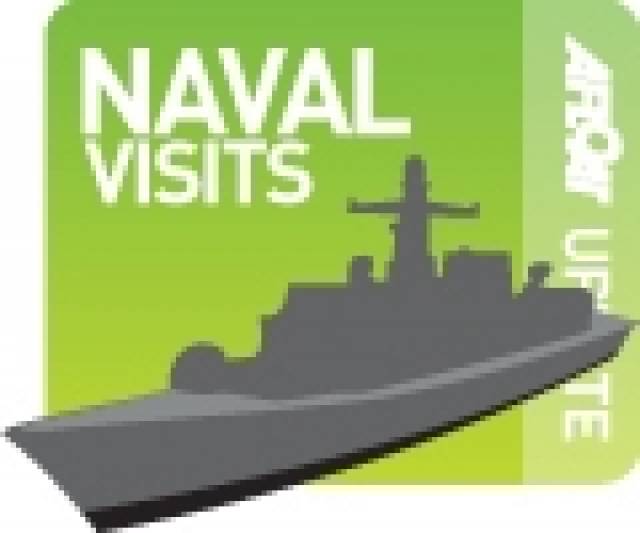#Aircraft-Carrier- The Royal Navy's HMS Illustrious (RO6) which is the High Readiness Helicopter and Commando Carrier made a rare visit to Dublin Port when the 22,000 tonnes former aircraft-carrier docked at noon today, writes Jehan Ashmore.
The last of the 'Invincible' class of aircraft-carriers commissioned for the Royal Navy is in the capital as part of an international naval flotilla which are arriving at various stages today, having just completed a major multi national warfare exercise off the coast of Scotland.
Captain Martin Connell, Commanding Officer said: "We are really delighted to be visiting Dublin, especially during the period of The Gathering."
To mark her visit to Ireland during the Gathering, HMS Illustrious will be floodlit in green. Captain Connell added "we have been kindly donated some high powered green lighting. We are all looking forward to seeing the end effect."
HMS Illustrious which otherwise is known affectionately by all aboard as 'Lusty' – which used to carry 'Harrier' VSTOL jump-jet aircraft is due to pay off after 32 years sterling service in 2014 to make way for the next-generation aircraft carriers.
As previously reported on Afloat.ie, on the other side of the Irish Sea, she made a call to Liverpool in February on what was likely to be her last call to that city as part of a farewell UK tour of ports.
As regards HMS Illustrious's last call to Dublin Port, this was back in 2005 where she docked along the south quays, whereas on this occasion she is moored in Alexandra Basin, facing opposite the Poolbeg Yacht & Boat Club marina in Ringsend.
She is to remain in the port over the weekend and depart on Monday.































































